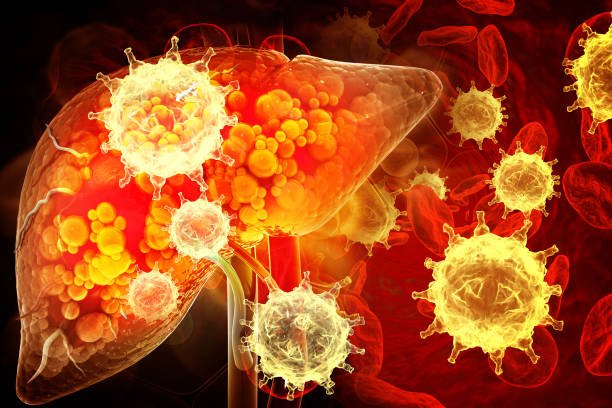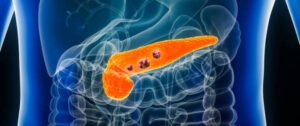
What Are the Warning Signs of Liver Cancer? List of Signs, Symptoms and Diagnosis of Liver Cancer
Liver cancer is scary because it usually has no symptoms that are particularly noticeable. The liver is a silent organ. This is mainly because the liver has no innervation. This is why early-stage liver cancer does not cause pain, making it easy for cancer patients to take it lightly. Therefore, when liver cancer is discovered, it is often already in the terminal stage. This article will take you to understand the symptoms, precursors and diagnosis of liver cancer
Symptoms and signs of liver cancer
Although the symptoms of liver cancer are not obvious, with the proliferation of liver cancer cells and the location of the tumors, some warning signs and precursors will gradually appear in our bodies, including:
- Upper abdominal distension and pain
Since the liver itself has no pain-sensing nerves, most small liver cancers do not cause pain. However, there are pain-sensing nerves on the capsule on the surface of the liver. Therefore, if the tumor happens to grow here, no matter how small it is, it may cause distension and pain in the upper abdomen once it hits the capsule. - Jaundice
If cancer cells grow near the bile ducts, once the cancer cells invade, jaundice will occur due to dilation of the intrahepatic bile ducts. If the tumor is so large that most of the liver tissue is replaced by liver cancer tissue, jaundice can also occur. - Edema of lower limbs, ascites, and vomiting blood
If cancer cells grow near the hepatic portal vein, they can easily enter the blood vessels and increase the pressure in the hepatic portal vein, causing edema of the lower limbs, ascites, abdominal distension or esophageal venous aneurysm rupture and bleeding. In mild cases, black stools or bloody stools may occur, and in severe cases, May vomit a large amount of blood, which may be life-threatening - Acute abdominal pain
If the tumor blood vessel ruptures and bleeds (so-called liver cancer rupture), it will suddenly cause severe abdominal pain and even cause shock and fainting.
Also pay attention if the following symptoms occur:
- Tired
- Loss of appetite
- Abdominal bloating
- Weight loss
- If liver cancer reaches the late stage and the cancer cells metastasize to other parts of the body, it will cause different symptoms:
- Transfer to bone causing pain
- Metastasis to the brain causing headache, nausea, and coma
- Metastasis to the lungs causing coughing and hemoptysis

Diagnosis of liver cancer
The diagnosis methods of liver cancer are as follows:
- Blood test
Blood tests are a very convenient way to screen for liver cancer. The data of “Alpha-Fetoprotein (AFP)” in serum can be used as an indicator for diagnosing liver cancer. If it exceeds the standard, be careful.
However, after liver inflammation, the fetal protein value may also increase; generally speaking, the fetal protein value of pregnant women will also increase. It can be seen from this that if abnormal fetal protein is found in a blood test, one must not jump to the conclusion that he has cancer, and should cooperate with other tests to confirm the diagnosis. - Imaging examination
The purposes of imaging examinations before and after diagnosis of liver cancer include:
- Find areas that may be cancer
- Help doctors perform biopsy on suspicious areas
- Check how far the cancer has spread
- Guided treatment
- Check if cancer treatment is working
- Check if cancer has returned
- Imaging tests can complement blood tests, including limitations
- Abdominal ultrasound scan: Ultrasound is the most common first examination of the liver. It does not require intrusion into the human body and can detect tumors as small as 1 cm.
- Computed tomography (CT scan): It can find invasive tumors that cannot be detected by ultrasound scan. It is one of the main methods for localization and diagnosis of liver cancer. It can also be used to accurately assist in slicing. If liver cancer is diagnosed, a chest computed tomography scan is usually performed to determine whether the cancer cells have spread.
- Magnetic resonance imaging (MRI): Can find invasive tumors that cannot be detected by ultrasound scans. It can sometimes tell whether a tumor is benign or malignant, and can also see if there are blockages in the blood vessels around the liver and show whether cancer cells have spread to other areas.
- Angiography: If fetal protein continues to rise and other tests cannot detect liver cancer, angiography is required. This test requires invasion of the human body and will also cause discomfort to the patient.
- Pathological tissue diagnosis

Pathological tissue diagnosis
Taking liver tissue for pathological examination is the most accurate way to diagnose liver cancer, such as liver puncture.
Liver puncture
Liver puncture, also known as liver biopsy, involves inserting a fine needle into the patient’s liver to collect tissue for testing. However, if the patient has ascites and is unconscious, this examination is not suitable. Types of biopsy collection include:
- Needle biopsy: A needle is used to puncture the skin into the liver lesion area to obtain a specimen, usually guided by ultrasound or computed tomography.
- Laparoscopic sectioning: Sectioning specimens can be taken simultaneously with laparoscopy, allowing the physician to see the surface of the liver and target abnormal areas for sampling.
- Surgical sectioning: Surgery to remove part or the entire tumor and some surrounding normal liver tissue for examination.












